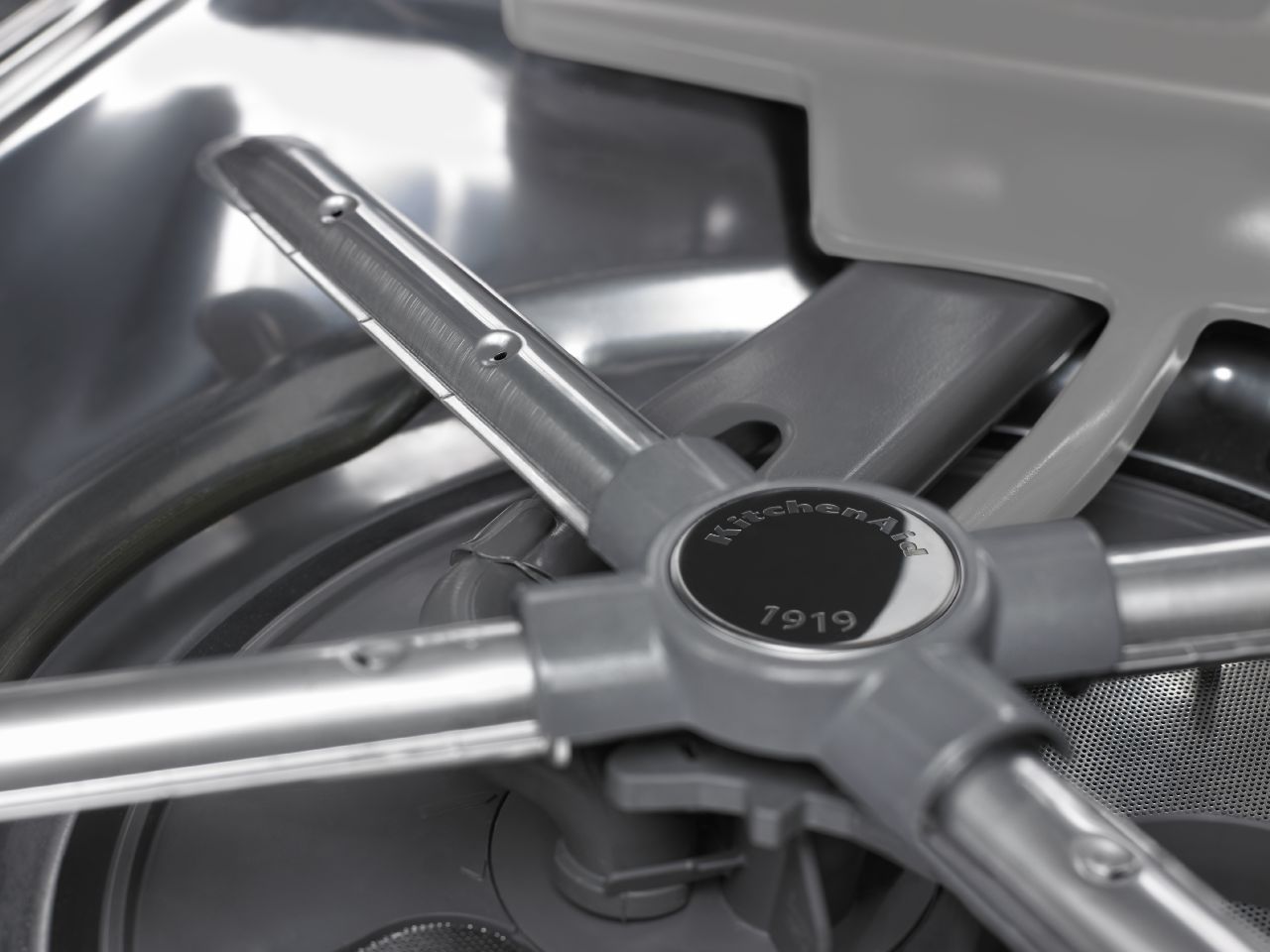
Certain appliances, like dishwashers and washing machines, seem like they’d be self-cleaning. After all, they do use cleaning products and hot water every time you run them. Which is why they are often overlooked when it comes time to clean the house. But, despite their own cleaning abilities, these appliances should be cleaned just like every other appliance in your home. While dishwasher certainly works hard to scrub your dishes until they sparkle, it isn’t entirely efficient at cleaning itself. Over the course of several cycles, bits of food particles will get stuck in various nooks and crannies. Grease from dirty dishes sticks to your dishwasher’s interior surfaces. And don’t forget about pesky water and mineral build-up. If you continually neglect to clean your dishwasher, your dishes will suffer. So, if you’ve noticed spots or filmy residue on your dishes, or a foul smell coming from the area, a dirty dishwasher is likely to blame.
Goodbye Food Particles
Removing excess food is important to keep your dishwasher clean and prevent foul odors, but most people don’t give much thought to the food particles sitting dishwasher. If the dishes come out clean and free from leftover food, they simply put them back in your cabinet and move on with their day. After all, the plates are clean, what else is there to be concerned about? In theory, all food particles that came from your dishes would be washed away, never to be seen again, but that’s not always the case. Small bits often get left behind. This can cause your dishwasher to smell similar to a dirty garbage disposal, and no one wants that.
To prevent foul odors, it’s best to scrub your plates before putting them into the dishwasher. You don’t have to do a thorough cleaning; that would defeat the purpose. But if you notice a pan is covered with quite a bit of dried food, give it a quick scrub before loading it. It’s also a good idea to clean any leftover food from your dishwasher before the next wash. To do this, remove the bottom rack and use a paper towel to wipe down the inside of the appliance.
All the Nooks and Crannies
For proper drainage, you want to remove anything blocking the drain. These blockages are often the food particles we just talked about, but you’d be surprised what else you might find when you remove the bottom rack and take a closer look at the drain. People have found everything from seafood shells and glass shards to plastic and scraps of paper preventing their dishwashers’ water from flowing freely. To ensure your dishwasher isn’t being clogged by any of these culprits, it’s important to closely inspect the inside of your dishwasher drain, including the holes of the spray arm. If you do find build upon the arm, use an old toothbrush to scrub them down with vinegar. Before closing your dishwasher back up, make sure you wipe down the interior door, paying close attention to the edges where it seals shut. Food particles can become stuck there, waiting to dislodge later, and it is also a prime location from grimy buildup.
Filter Fix
Cleaning your dishwasher without cleaning your filter is pretty much pointless. It would be like brushing your teeth without toothpaste. You can scrub away, but your mouth will still be dirty. A dirty filter is often the cause of extremely foul odors and dirty water. To clean a dishwasher filter, you’ll first need to remove it. Here you’ll find instructions to properly remove a Whirlpool filter. Once your filter has been removed, rinse it thoroughly with hot water, and gently scrub it clean using a soft toothbrush. It’s important to use a soft brush and a gentle hand when scrubbing the filter so you don’t cause damage.
The Miracles of Vinegar and Baking Soda
Once every two or three months perform a deep cleaning on your dishwasher. Running a vinegar cycle through your dishwasher is a common and effective DIY method for deep cleaning your appliance. Vinegar is a powerful natural cleaner, making it a favorite in many households since it gets the job done without harsh chemicals and dangerous ingredients. And it does wonders inside your dishwasher. Even Maytag suggests vinegar as an effective cleaning agent.
Using it to deep clean your dishwasher is an incredibly easy process. Simply place a glass container, filled with two cups of distilled white vinegar in your dishwasher and run a normal cycle. Do not add any detergent or dishes besides the glass container holding the vinegar. If you want to take your deep cleaning a step further, you can run a short rinse cycle with baking soda. This added step will remove any lingering odors that the vinegar didn’t eliminate. Baking soda is well known for absorbing foul odors, and will effectively do so in your dishwasher. To run a baking soda cycle, sprinkle a cup of baking soda across the bottom of your dishwasher and set your appliance to rinse. If a DIY solution doesn’t sound like the right option for you, you can always use Affresh tablets to give your dishwasher a thoroughly deep clean.
Don’t Forget the Exterior
Now that you’ve effectively cleaned the interior of your dishwasher, why not make the outside sparkle too? It only takes a minute to wipe down the exterior part of the door, but it’ll give your kitchen a bit of extra shine. If your dishwasher’s exterior is plastic, use a sponge and hot, soapy water to wipe it down. If you have stainless steel appliances, it’s best to use glass cleaner to remove pesky fingerprints or unwanted grime. Remember to never spray cleaner directly onto your dishwasher front. It won’t harm the steel, but it could mess with the electronic controls. Dishwashers make our lives so much easier. Gone are the sinks full of dishes and the sore arms from scrubbing plate after plate. They are a wonderful appliance that makes cleaning up after family dinners, dinner parties, and at-home date nights a breeze. Using these cleaning methods can help ensure they stay clean and continue working effectively to produce sparkling, clean dishes every time.

Your Guide to Whirlpool Microwave Replacement Parts

What to Do When Your Kenmore Dryer Won’t Start

How to Resolve the LG Washer LE Error Code

Why Does My Oven Smell Like Gas? Causes and What to Do

Maytag Dryer Not Heating? Here’s How to Fix It

6 Common Reasons Your Speed Queen Dryer Isn’t Heating

8 Reasons Your Samsung Refrigerator Is Not Cooling

9 Most Reliable Washer and Dryer Brands

How to Get Ink out of Your Dryer the Easy Way

Why Is My Fridge Making Noise That Stops When the Door Is Open?

Frigidaire Refrigerator Error Code H1: Causes & Solutions

How to Clean a Dryer Vent Without Moving the Dryer

9 Reasons Your LG Refrigerator Isn’t Cooling

LG Refrigerator Not Making Ice? Here’s What To Do!


